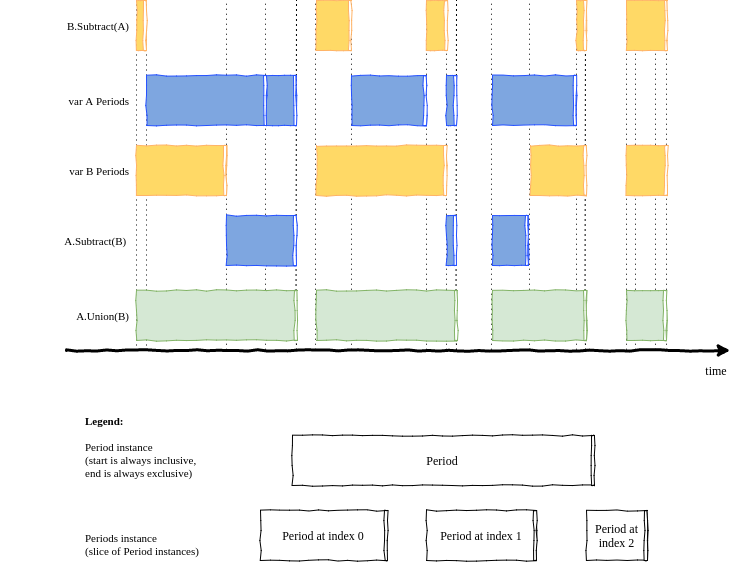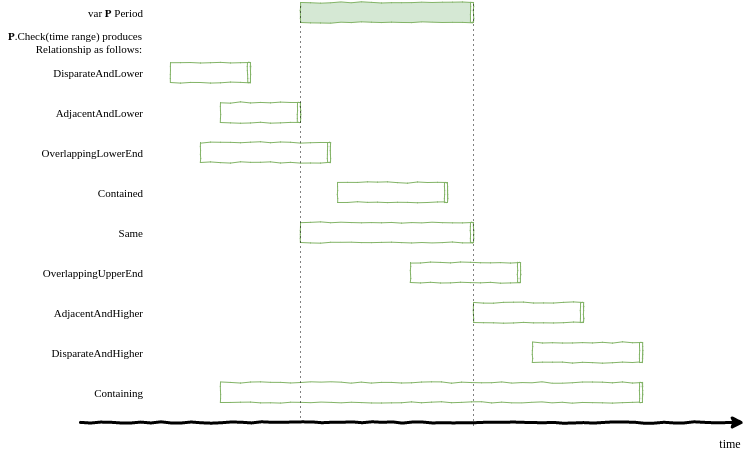Operating on time ranges
For one of my recent projects I needed a tool to perform few basic operations on time ranges (called periods here).
I was doing a lot of time manipulation (however cool that sound I am not building a time machine) and was getting tired of polluting other code with this responsibility. I decided to encapsulate that in a separate library.
The library https://bitbucket.org/outo/temporal/src/master/pops/ (period operations) contains:
Contains constructs:
Period:
an immutable representation of time range with the lower boundary being inclusive and upper being exclusive
methods:
Checkwill identify the placement of specified time range with respect to the time range within this period
Getcopy of startIncl and endIncl as multi returnGetStartInclcopy of startInclGetEndExclcopy of endIncl
Performance
each test performed on on an Intel® Core™ i7 4500U Processor with enough DDR3 SDRAM, consisted of 100 samples, each test based on checking the relationship between a target time range and a sliding and size-changing time range constructed to simulate each of the possible relationships took on average nearly 100 nanoseconds per PeriodCheck (with extremums at 80 and 160 nanoseconds)
Periods:
an immutable representation of practically (memory, language constraints) unlimited number of periods
methods:
Subtractwill return a newPeriodsinstance representing the time ranges within this object that are not within specified objectUnionwill return a newPeriodsinstance representing the time ranges within this object and specified object
both methods' result is:
- defragmented - there aren't going to be two ranges that are overlapping,
- stitched - there aren't going to be two ranges that are adjacent,
- sorted - the ranges are appearing from the earliest to most recent
Note:
It is possible to create an instance of Periods with erratic time ranges
by passing such to the constructing function CreatePeriods
Performance
each test performed on on an Intel® Core™ i7 4500U Processor with enough DDR3 SDRAM, consisted of 1000 samples of two Periods, each with about 30 distinct ranges (defragmented, stitched and sorted) took on average:
- Subtract - 80 microseconds (producing nearly 30 ranges)
- Union - 76 microseconds (producing about 20 ranges)

